Homeschooling in high school feels like a whole new ball park. Do you want to have the hands-on family-style homeschool that Layers of Learning provides, but you aren’t sure it’s rigorous enough for your high schooler? Adapt it! Every homeschool kid deserves a tailored education plan.
As my kids have begun high school, I’ve noticed that we have evolved how we’ve used Layers of Learning a little bit, and I hope that some of my ideas might help you as you homeschool a high schooler.
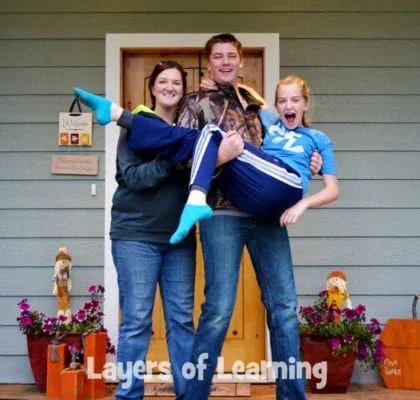
The Changing Needs of Teens
Here are a few things I’ve noticed about my teens:
First, my teenagers like a little more independence. They can work more quickly and more deeply than their little siblings, and let’s get real, they don’t ALWAYS want to be the helper (though they are assigned that task pretty regularly. . . more on that later).
Second, I worry about truly achieving a high school level of learning and making sure they are ready for college and a career. I want to make sure they are getting the “credits” I need to put on their transcripts. And I want them to be ready for the SAT.
Third, my teens have interests and pursuits beyond math, language arts, history, geography, science, and art (or deeper interests within those fields).
My Story
My oldest, Tyler, started high school while my youngest was in kindergarten, but I still wanted to stick with the hands-on collaborative homeschool we’ve come to love. I still wanted to use Layers of Learning.
At the same time, Tyler has some specific needs that I’ve become poignantly aware of. You see, all of these years of exploration style homeschooling have taught my kids how to learn and research quite independently. As a result, my son has embarked on some interests well beyond my knowledge level (and outside of my own interests).
Last year I assigned Tyler to write a research paper and let him choose his own topic; of course he chose one of his favorite interests – robotics. He wrote a well-researched, excellent paper that ended up sparking a real passion. He began researching and then building robots. Soon he was pursuing computer programming, 3-D design and printing, and building his own FPV drones (first person view remote controlled drone quadcopters that you wear goggles to fly so you see from the point of view of the drone). Clearly the science topics within Layers of Learning were not going to meet his needs by themselves – there is no drone unit!
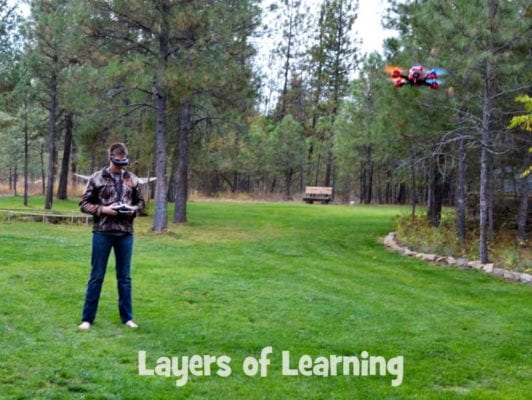
At this point he feels certain that his career will be in this realm, and he’s so excited about it all that he’s independently pursuing it without being assigned. And he likes the independence. But he’s still got me around reminding him that the SAT and college classes will not all revolve around computer programming and robotics. So how can all this fit into our homeschool?
Spread Their Wings
I like to give my teens blocks of our school day to be independent. This isn’t really that hard since the littler ones don’t have the lengthy attention spans of older kids. To foster that need for independence, I switched my teens from using paper planners to using an online planner where I can link lots of tutorial videos, websites, and interesting articles that they can read and pursue on their own.
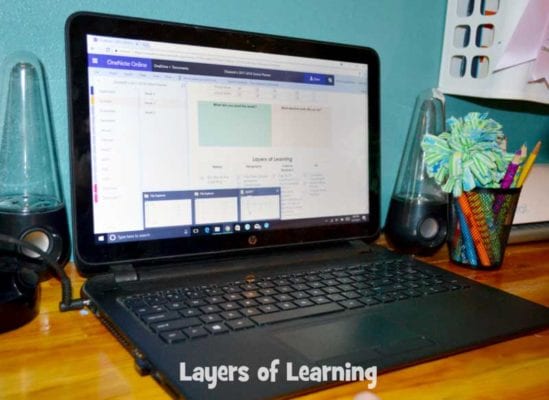
They still explore and share the topics we are learning about in Layers of Learning, but they get a little more freedom to do it on their own instead of always sitting around the table with a project, a read-aloud, the little ones, and Mom. They still participate in some projects and listen in on the interesting books, but they also have time to go it alone.
Reading, Research, & Writing
By the time kids are in high school they are learning more like an adult. How do you learn when there’s something you want to know? You probably look it up. You Google it or read a book or find a YouTube video about whatever it is that’s piquing your curiosity. That’s how most high schoolers like to learn too. Put a great book in their hands or let them do their own research, and then have them write down what they are finding out in a variety of ways.
The writing component of high school is especially important. This might be as simple as taking notes, writing a five paragraph essay, or perhaps making an electronic slideshow presentation about it. Remember that writing is a teen’s strongest tool for learning. We are engaged by books, but when we write and have to articulate our own thoughts, that knowledge creates growth and shapes our mindset and worldview.
Take advantage of the high school library list suggestions and writer’s workshop ideas in the Layers of Learning units. These are perfect for high schoolers when a craft just doesn’t seem applicable.
Keep Some of the Hands-On
Even though reading, research, and writing will be your teen’s main learning tools, keep some of the hands-on components too. How many times have you read a Layers of Learning Exploration and thought, “Oooh, that looks FUN! I want to do that too!” No matter our age, there’s something awesomely memorable that happens when we really engage in what we’re learning. Teens too.
I have learned a lot from using Layers of Learning, and that is after a whole life of my own schooling, up through a bachelor’s degree. I still get in there and do projects and experiments with my kids. My art sketchbook is full of all of my own art projects from explorations we’ve done. I write down my own hypothesis when we conduct an experiment. And I have my own history and geography notebook full of lapbooks, illustrated note sheets, maps, and worksheets. If I’m not too old for it, my teens certainly aren’t either.
Wearing The Teacher’s Hat
Teaching The Whole Family
I often say I feel like my real education started when I became a homeschool mom. There’s something magical about teaching. You learn more than all of your students. So give your teens the Layers of Learning Unit Book and ask them to choose an exploration to teach to the younger kids. They can research and prepare the information and the materials they will use to teach. My kids learn SO much when they teach.
Teaching Their Buddy
My kids also have “buddies.” I’ve got four kids, so this works well for us. The big one has to teach and help the little one with projects and reading. They all learn really well – the teens from teaching and the littles from having a one-on-one helper.
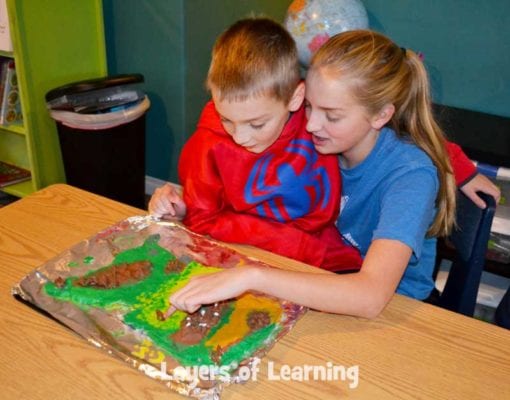
Presentations
At the end of each unit we always end with a day filled with sharing the projects we’ve made and the things we’ve learned. We all present our work and teach each other. High school teens should be involved in this too. Remember, even with some independence, these together times will maintain your family school. And presenting is yet another teaching opportunity.
Utilizing the Units at a Glance With An Outside Course
If you feel like your teen still needs an additional outside course for a subject, go ahead and get one. I used additional science courses with my high schoolers because both of my teens want to go into the science fields and I wanted to give them a more in-depth head start. They have really advanced scientific minds and are hungry for as much as I can give them. I used the Layers of Learning Units at a Glance and matched up the course syllabus with the Layers of Learning science topics. My big kids completed their science course, mixed with a few explorations from Layers of Learning, while my littles used just the Layers of Learning from the corresponding units.
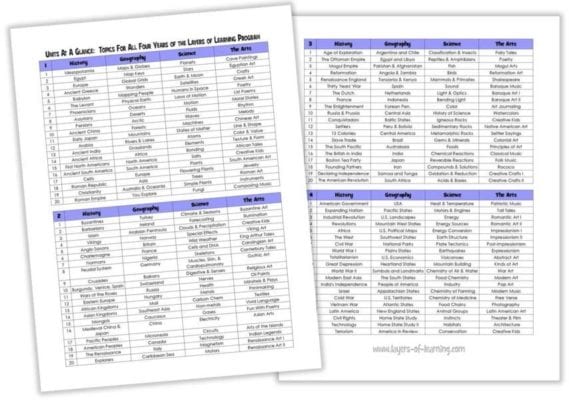
There is no rule that says you have to teach out of one unit book at a time. I used Year 3 in order for history, geography, and art, but then jumped around in the science units all year long to match the syllabus of my teens. And you know what? It worked swimmingly! We were all still learning together even though we broke things up a bit. Don’t ever be tied down by a curriculum. You don’t work for your curriculum; your curriculum works for you.
Just a quick side note – I went in to our local PS with Layers of Learning in hand and met with a team of science teachers once. Their overwhelming response was that it MORE than met the criteria of what they were teaching to their students. Don’t feel like you need to get an outside course to meet requirements. But if your kids are ultra-interested in a subject, THEY made need more, requirements aside. The same is true if you have a future artist, musician, mechanic, or archaeologist in your family.
Modifying For A World History Credit
This same thing applies to history. If your teen needs to take a World History Class, match up the chapters with the corresponding history units. A typical high school world history syllabus spends the first semester on ancient history (Year 1 of Layers of Learning) and the second semester divided into quarters, with quarter 3 on medieval history and the Renaissance and quarter 4 on more modern history, typically focusing on the World Wars. Layers of Learning Years 2 & 3 would be Quarter 3, and Layers of Learning Year 4 is modern. You would be selecting several units from each of the 4 Years and putting them together into one school year, just focusing on the most important world events.
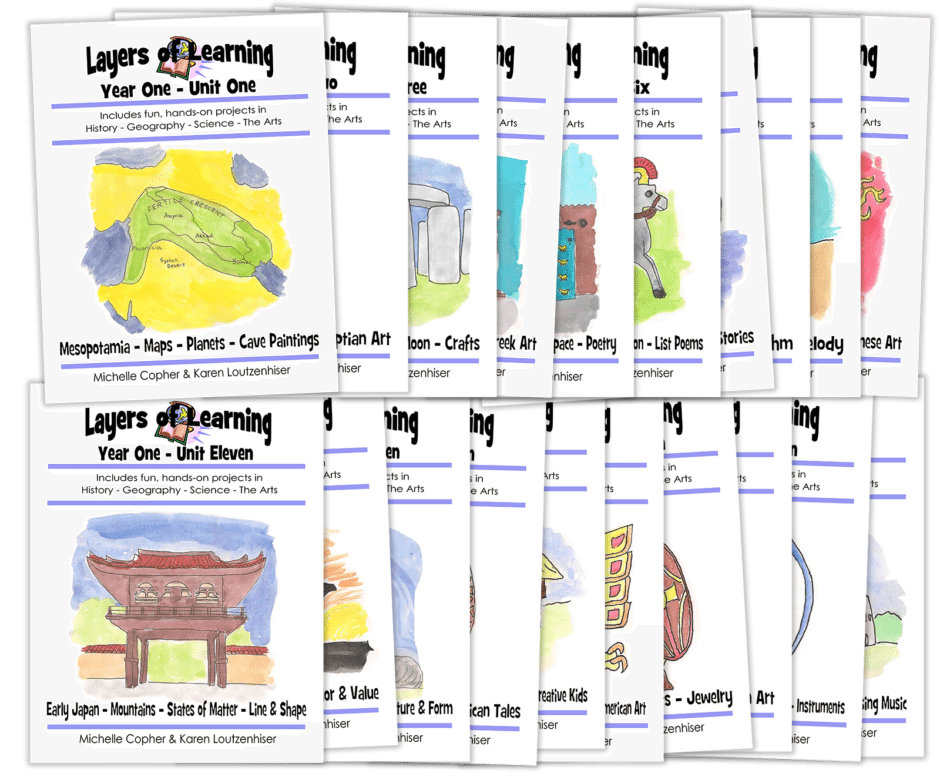
If you have a specific syllabus in mind you could easily match up the applicable units by comparing it with the history units in the Layers of Learning Units at a Glance. You can keep everyone on the same topic and learning together by utilizing the units in a different order. Have confidence though; if a high schooler uses all 4 years of Layers of Learning History, especially if you’re adding in the geograph, he or she will have definitely earned adequate high school history credits. They are comprehensive and global.
Additional Classes & Opportunities
Sign your high schooler up for some additional classes. Go to a local community college, a trade school, or find an online class. Look for apprenticeship opportunities.
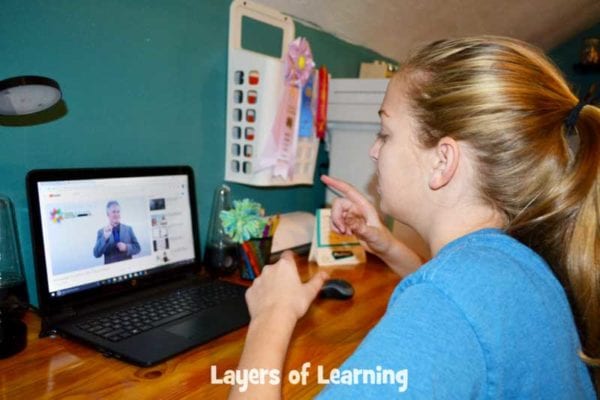
My son is 16 and takes some college level classes now at our local community college. He also joined a local drone building group. My daughter is taking an online sign language class in addition to her regular studies. A friend of mine has her daughter volunteer one day a week in a vet’s office because that’s what she hopes to do someday. If your teen sparks an interest in something, let them go ahead and pursue it. This accomplishes three things:
- They get an opportunity to rub shoulders with mentors who are more passionate and knowledgable about their fields than Mom is. Whether this is an online sign language video or an in-person internship, this still applies.
- It allows for some of that much-needed independence. Teens will benefit from small doses of independence that allow them to become self-sufficient and exercise personal responsibility. Remember that you are preparing them to be on their own someday. These independent forays are teaching more than just the subject matter.
- It gives you, Mom, a break in a subject or two. Homeschool moms wear a lot of hats, and it feels good to take one of them off now and again.
The SAT/ACT
Make one of those outside classes an SAT/ACT prep class if your teen wants to go to college. The SAT and ACT have specific formats and question styles that are different than most content tests, so practice with them really boosts scores. Most teens can work through SAT/ACT test prep books and online courses independently.
Adapting Your Homeschool
The way you homeschool inevitably changes with the seasons of your life. Homeschooling in high school is definitely a different season. I used to think that I would eventually have our plans and our routines so perfect that I would finally settle on them and not need to make changes year to year. Now I understand that not only will that never happen, but it shouldn’t.
Our changing homeschool is a testament to our growth. Not only are we improving what we do every year, but we are also adapting to our personal growth and needs. If I still taught Tyler at sixteen years old the way I did when he was five, that would be problematic. In fact, the fact that I taught him differently at fifteen than I do at sixteen doesn’t mean our past plans were flawed; it means we’ve conquered them and are ready to move on to even more.
Now I’ve got two teens using Layers of Learning in our homeschool. My daughter wants to be a dentist someday. She has a different path than her big brother, but they are both becoming more independent, spreading their wings, and branching out with mentors. They are also both great buddies and teachers to their younger siblings. In a sense, they are mentors to their little brother and sister. We all still use Layers of Learning and have the hands-on homeschool I always wanted, but we use it in a way that fits the season of our lives we’re in.
More From Layers of Learning
Our curriculum guide has a lot more information about how to use Layers of Learning with your family. Here’s a post on Homeschooling in High School that includes a free printable to help you make an education plan for homeschooling in high school. It has tons of tips and ideas if you feel nervous about this new season in your life.
Get a Free Unit
Choose between the first unit in each Layers of Learning subject to try for free when you sign up for the newsletter.
We never spam and you can cancel your subscription at any time.



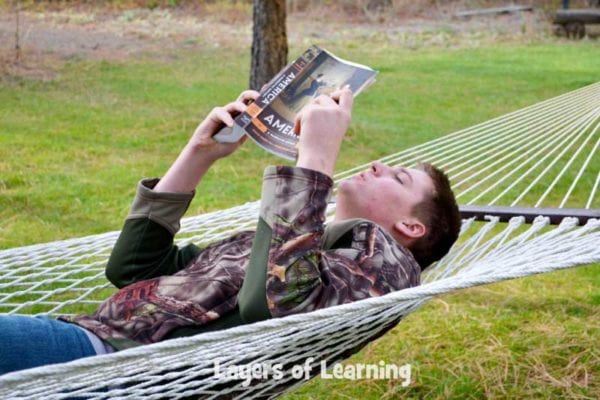
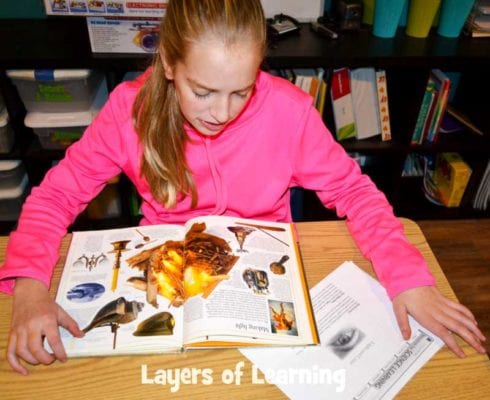

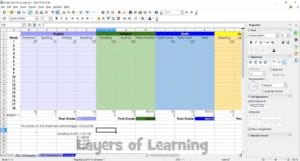
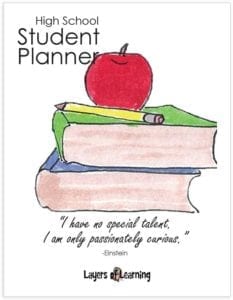

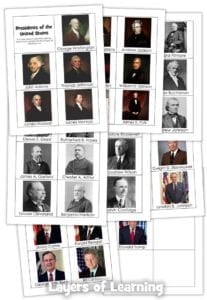
I was curious about how you did the World History for your high schooler in one year. Would I be able to email or talk to you about that?
Hi Eleni,
I’m happy to answer any questions. Shoot me an e-mail at contact@layers-of-learning.com.
Thanks,
Karen